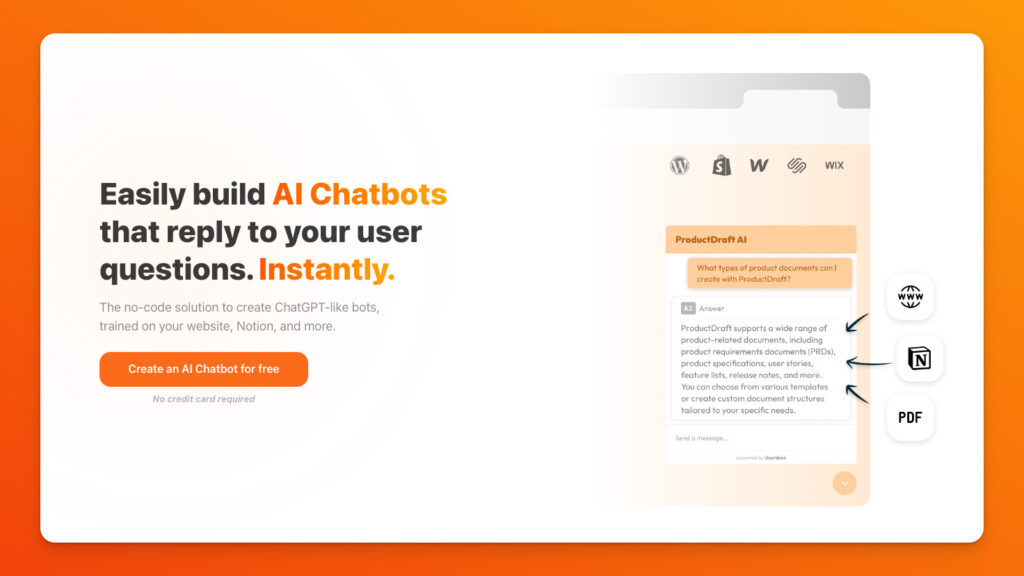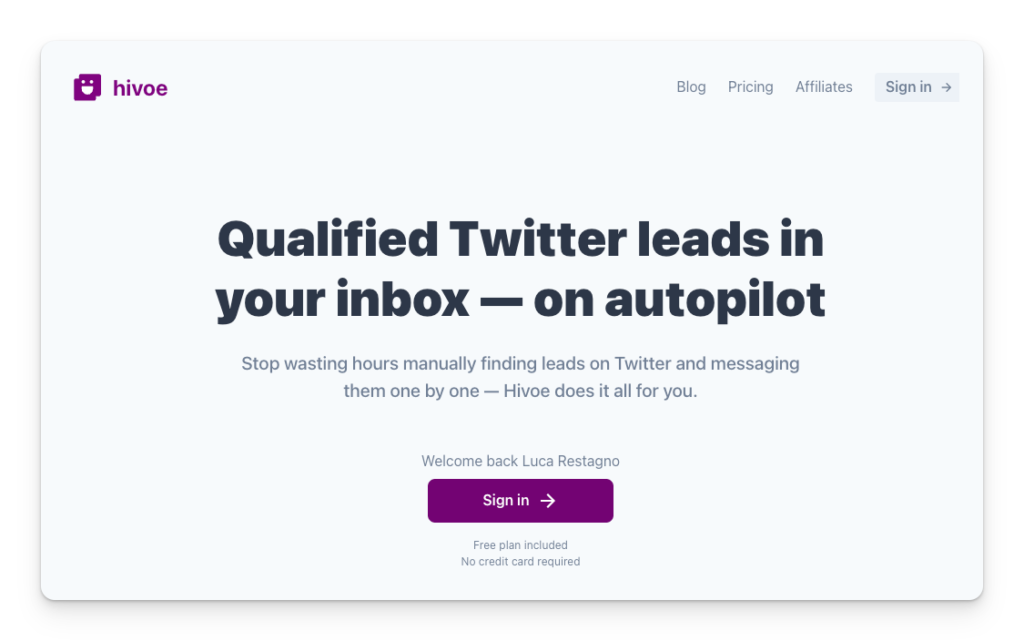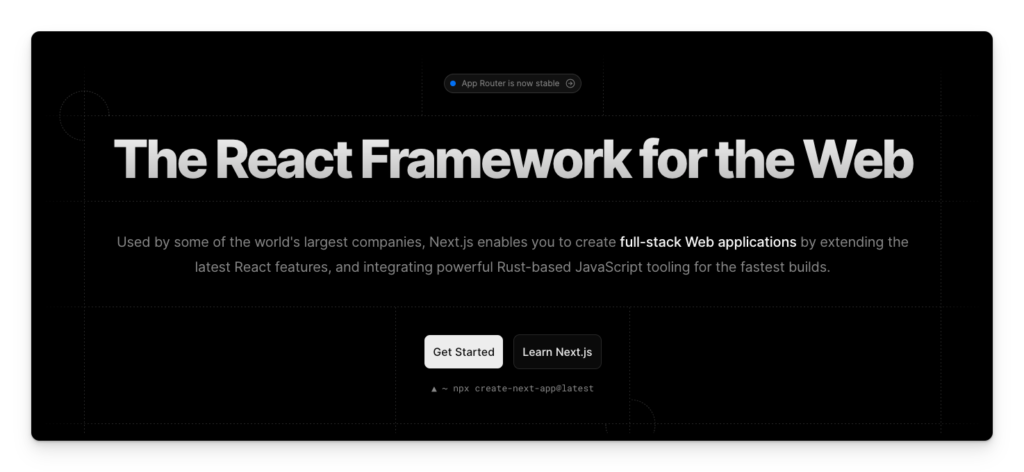Subscribe to read this Interview
Luca is the founder of UserDesk, an AI Customer Service Chatbot that is powered by AI Chatbots and trained on your web pages, Notion pages, and PDF files.
Hey Luca, Tell us more about what you are working on

Userdesk is a live chat customer support solution, powered by AI Chatbots, trained on your websites, Notion pages, and PDF files.
Small businesses invest time in creating content, like knowledge bases, guides, and blog posts, but they don’t have a quick way to leverage that effort.
With Userdesk, you can fully take advantage of it, and let an AI reply to the questions of your users, right on your landing page.
Userdesk provides a web widget that you can embed on your website, and start leveraging your knowledge base in less than 5 minutes.
Tell us More about your background, and how you came up with the idea of UserDesk
I am a software engineer, but I have been doing indie hacking for a couple of years. I have launched other SaaS products that I recently sold, so I know what it means to do customer support as a solopreneur. You need to reply to a lot of questions, and most of them are already answered on your website, via an FAQ section, of a specific guide.
That’s how I thought about this idea, helping solo founders and small teams with customer support by reducing the time dedicated to customer support, only to high-value support requests. For all the other requests, the AI will automatically reply to them.
How did you get your first customers for UserDesk?
I have a Twitter profile (@ikoichi) with a good audience (around 13k followers at the time of writing) and I keep talking about the product on a daily basis. I did a pre-launch of Userdesk, offering a lifetime deal for $69 (without trying the product), and I sold around 30 licenses in 24 hours with a single tweet. But my first subscribers arrived a month later when the product was publicly available.
I created a Discord community and I invite the new users to subscribe. The community gives me the opportunity to have a direct line to talk to my prospects, and it is a channel I use for new announcements and discussions.
What Marketing Channels are working for you now?

My main distribution channel is Twitter (now X), I invested the last couple of years in growing an audience on that platform. But I’m experimenting with Google Ads, LinkedIn Ads, and cold outreach on LinkedIn too.
Userdesk is intended to be used by professionals, so LinkedIn looks like the perfect place to find good leads. AI directories played a good role in driving more traffic to the website and giving visibility to the product.
How is your business doing now?

I publicly launched Userdesk in June 2023, and at the moment the MRR is $193 with 5 paying customers.
I was able to attract around 5k unique visitors in the first 30 days after launch.
But the signup conversion is around 10%, so I need to improve the messaging and the quality of traffic.
I want to explore more use cases for my AI Chatbots solution, and eventually make partnerships and sponsorships to give more visibility to the product.
In the past, I’ve sponsored newsletters targeting specific niches and podcast sponsorships, and I want to try those paths again.
What has been your biggest achievement in business thus far?

In the last few years, I’ve built two products related to Twitter, Hivoe.com, and Inboxs.io. Both contributed to generating €4k MRR in a year which is a great result for me.
Unfortunately, due to the significant Twitter API price increase (from 0 to $42k/month) I had to sell such products.
I think that a couple of factors contributed to those results.
My audience is on Twitter, and the products were Twitter related, so there was a good match between the traffic generated and the value proposition.
The products helped people save time or make money, which are the main ingredients to generating successful products.
Hivoe is a cold outreach platform to Twitter, and Inboxs is a Twitter CRM and productivity-focused inbox for Direct Messages.
What were the worst mistakes you’ve made since launching?

In the past, I have built another AI product called omniwrite.ai. It is a browser extension that adds AI writing capabilities to every browser.
The idea looked great, but there’s a lot of competition and it’s very difficult to convince people to pay for such a service, therefore I abandoned that project.
The main mistake was following a trend and not a specific problem to solve. Even if there are successful companies in that space, they might have investments backing them, or just the perfect timing in the time to market.
What Tech Stack are you currently using?

I use almost the same stack for all my products. I use React and NextJS (JavaScript) to build public websites and web apps.
NextJS allows you to publish a new website in 5 minutes, and scale it effortlessly. I also use ChakraUI, a UI components library for React, which significantly increased my productivity.
For more sophisticated background jobs, I use Amazon Web Services. Using the same stack, allows me to reuse most of the code from one project to another.
What advice would you give to new entrepreneurs?
Look for problems to solve by looking at your own itches.
It would be easier to solve them and you’ll already know the domain of the issue, in comparison to issues that others face. In that case, you’ll need to explore the domain and understand they’re issue, which is very time-consuming.
Focus on SEO and build an audience, that’s very effective especially if you solve a problem for the people who is part of it.
Launch many products, you never know what works in advance. If you are a solopreneur, you probably don’t have much time to dedicate to a product. If you don’t see outstanding traction (let’s say $200 MRR in 6 months), you could start thinking to solve another problem.
What resources do you recommend for entrepreneurs?

A couple of books that a recommend are The Millionaire Fastlane by MJ DeMarco, which opened my mind to a new perspective about scaling your finance via entrepreneurship, versus all other possible paths (job career, patents, and so on).
The second one is The Embedded Entrepreneur by Arvid Kahl, a description of how to be an entrepreneur that lives in communities to spot issues and grow a business.
Lastly, Where can we learn more about you?
You can find me on Twitter and follow my journey as a solopreneur in my newsletter The Solopreneur on Road to Freedom.



